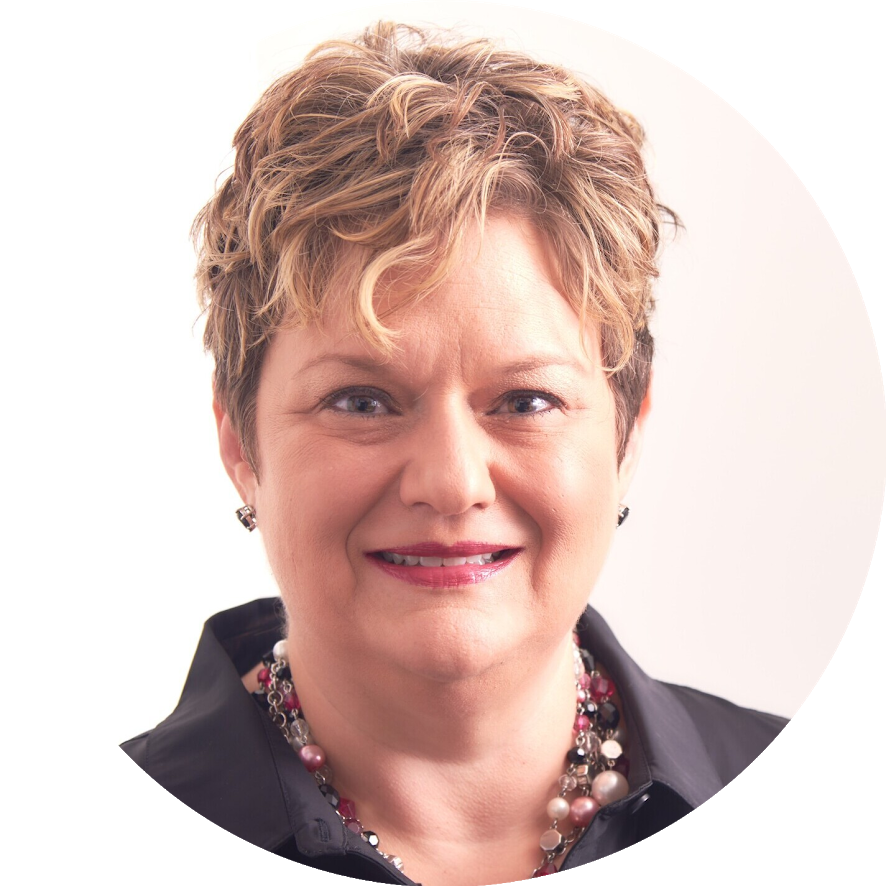How and Why Ironclad Companies are Destroying the Old Rules of Business and Surviving
Is your team operating at their best or just operating the best they can? In times like these, guessing as you go doesn’t offer value—and won’t cut it.
Our world changed this year.
We did not expect this disruption. But COVID-19 happened and changed almost everything in our business and lives. As leaders, if we are to overcome, we must adapt and reconsider everything that we do and how we do it.
These are not easy times, and there is no playbook for the outcome. But you can do more than survive. You can actually thrive.
We all know, there are many great managers and c-suite teams that do extraordinarily well when things are going well and that they know what to do to mitigate risk in an economic downturn. But these times are like so many ads have stated ad nauseam: unprecedented
In unprecedented times we are learning that people are more distracted as their skills and capabilities are tested. They are exhausted at having to re-strategize frequently and so become less effective.
That’s understandable, but it’s obviously not good for business.
However, even in a pandemic, there is good news. We have a better idea of what works and what doesn’t, and we can throw away old recommendations that actually hurt businesses.
A change of this scale provides an opportunity to make bold choices, to destroy old rules, and challenge the status quo. The crucial element to being effective is acting quickly and on purpose, to mitigate risks and address the gaps… Do this, and you will be successful in getting everyone re-aligned to drive the actual VISION of your business.
Tools That Give You Immediate Value NOW!
It is natural to want to pull back in times of uncertainty. But this is the best time to take the leap to become customer-centric and agile as you establish your ability to improve continuously. Act now, and you can turn your current conditions into strategic gain. This time offers you a privileged look at the state of your business (and everyone else’s…) and a clear path to execute new tactics. You can reinforce your strengths and shore up your weaknesses because never before has it been so glaringly apparent as to what makes your business move and stagnate.
Use this distilled truth to your advantage.
Ask yourself: how can you help your customers? What is challenging them? What do they need that you can give them? Then pull your key team members together and solve their problems.
Determine what you can do in the next days and weeks. Now is the time to be innovative and encourage ridiculous or bizarre ideas, which opens the door for genius. Leave in the past: reasons not to take certain actions and dishonoring out-of-the-box thinking.
Are your new management and technology demands,post pandemic, being met?
Let’s get started!
First, compile a huge listing of ideas. Do not qualify or quantify them. Simply, get them out of everyone’s head and onto paper.
Once you activate innovative thinking, you will develop exceptional models and the momentum to focus to make the greatest impact. Reconsider your underlying beliefs and think like a customer, from the outside, and into the business. Contemplate what your customers need, not how you do the work.
Utilize rapid prototyping to test out new ideas. Produce mock-ups to get a feel for how they work. Keep it simple. A cocktail napkin will do. Online collaboration tools work, obviously. The goal is to determine the concepts that will drive value for your customers. Establish cohorts to experiment and investigate the new concepts. Some ideas will lose their luster, while others exceed your wildest expectations. This is a normal part of the journey—even though it might not have been your past experience. Move ahead but be aware of purposeful risks.
Then be willing to fail fast and move on to the next item on the list.
Once you have concrete ideas that matter to your customers, make them real. Take manageable steps toward the goal and build them up over time. Iterating allows you to create value over time and establishes a foundation for continuous improvement. Incubating an experimentation approach allows everything to become a prototype or a work in progress. This mindset
minimizes the fear associated with failure. It acknowledges that we actually learn more from failure than success—meaning your team will want to do more. When everything is an experiment, then anything is possible. Leaders who tap into this superpower empower everyone.
Consider the scientific method for a second. It relies on failure to disprove hypotheses, leading to new theories. Remember, all you are doing at this state is testing and disproving, testing, and disproving. The series of failures you note will provide the basis for better returns. The point is
not to realize perfection but to continuously improve and deliver value. Establishing a running list of new ideas and opportunities to improve your business will help drive growth.
Applying the Foundation to Future Proof and Achieve NEAR-TERM Results!
Any business can be future-proofed. It likely means flipping the script on the way business has been conducted for years or decades.
But I can tell you that smart change works.
Having worked in a boots-on-the-ground fashion with businesses of all sizes, including leading monsters of industry, supports this conclusion. In addition to the knowledge gained through working with these companies, the power of the evidence of proof is undeniable.
Leading these companies to their goals through the clear definition, implementation, and management of business processes and the communication surrounding change taught the Lcubed team what works and what doesn’t. It taught us what to implement when we sign a new client or tackle a new initiative.
Savvy leaders have big VISION, but this is not laudable alone. There must be more. There must be a plan.
Teams cannot realize the vision by throwing people at it, continually reinventing the wheel, and leaving precious time and money on the table. Now, more than ever before, your actions need to be clear and meaningful.
The kicker is that without a clarified plan and process to reach goals, leaders and team members may think shooting from the hip will be effective—until they examine vulnerabilities breaking down the company.
Your takeaway is that it is totally possible to increase productivity, refine processes, and bolster profitability enabling your business to adapt and thrive.
The answer to the equation is the Adaptive Transformation™ framework. Note that this methodology was not born out of a series of brainstorming sessions; it is based on more than two decades of evidence-based results. The foundational elements of Adaptive Transformation™ are BEST practices. Lcubed leverages them across all business functions to achieve powerful results through blending strengths in innovative ways. They govern the following: Project Management, Process Performance Management, Internal Controls, and Organizational Change Management.
The Adaptive Transformation™ framework is rooted in problem-solving. It is designed to examine how to overcome an inability to deliver strategic results. It speaks to the challenge of decision-making taking too long and requiring too many people. It helps us break through the “it’s the way we’ve always done it” syndrome as we better focus on the voice of the customer.
This enables businesses to ensure that their products, services, or solutions speak to their external customers. The Adaptive Transformation™ framework drives us forward while disproving the idea that we face the same issues repeatedly and never make progress. If you are struggling with “seeing the forest for the trees” an outside consulting force can be a business lifesaver. Consider all new perspectives as you move forward.

Culture and Accountability, aka Creating LONG-TERM Value!
In creating your long-term results, focus on strategic foundation, operational foundation, people, process, and technology. When the strategy is anchored properly, these objectives will always be relevant and need addressing. Teams can work together toward achieving them and the results of their strategic plan to pave the way to long-lived success.
The foundation represents that the red side of our Rubik’s Cube has been put together, for instance. We can say as it applies to our teams or business functions that we know what the roles and responsibilities are of each of the team members. We can understand the capabilities needed to be successful in those roles and for those teams. Within these roles, we also have an
understanding of who the decision-makers are and where to go to resolve issues. Communicating
unified expectations is paramount to positive and powerful leadership.
With the operational business policies, processes, and procedures in place, we can refer to them if things aren’t working. At the very least, we know the operational risks have been discussed and understood and that we are on the road to improving productivity and efficiency! If the impact of a change or action is concerning, the reinforcement of open community communication and collaboration has been encouraged, so people will speak up and raise concerns.
In this environment, the strategic objectives are understood by all employees regardless of rank or role. Contributors to the business operations know what they are working on, what it means, and why they are doing it. They are empowered to solve problems, take corrective action, escalate, and seek guidance in challenging situations.
As you go through these processes, be assured that it is okay to take a step and fail. Doing so should be more positively received than doing nothing and hoping that somebody else will tackle the problem. This is the opposite of pushing off problems even as you come to grips with getting comfortable failing.
While we are getting our bearings beneath us, we need to understand that our customers are a key part of the operational foundation. We want them to be raving fans. But for this to happen, we have to understand who they are and what they want, as well as if they are getting what they want and need—which may not be the same things.
As Adaptive Transformation™ takes hold, it drives culture and defines the dimensions affecting the people, processes, and technology in business. Part of that foundation means building in the willingness for people to embrace change. Employees must understand that what the business does today, as awesome as it may be, will not be the same a year or two years from now.
Changes are inevitable, and what does not change in the world ultimately dies. You don’t want to just avoid dying. Again, you want to thrive! Open and honest communication should span the entire organization. After all, culture promotes candid communication—positive or negative—and people are appreciative of tough questions and thinking through problems from multiple perspectives.
Do this, and you’ll find this leads to an accountability-driven employee base. No one will say, “I
thought Joe was doing that.” Passing the blame won’t cut it when everyone owns the outcome
and their commitments. Support for accountability is the key to honest communication.
Moving On…
Disruption caught us off guard, but it provides an opportunity to respond and build our ability to adapt. Hoping for a return to normal is pointless; we live with uncertainty, and it is time to act. Right now, you have an opportunity to take the lead, build a stronger business, and make a difference for your customers.
The future is always somewhat uncertain. This year provided a huge wake-up call to remind us of that. You can redefine your relationship with your customers and build your internal capabilities to improve continuously as you strengthen your resilience to thrive through any event.
Are your new management and technology demands, post pandemic, being met?




